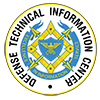EGLIN AIR FORCE BASE, Fla. – The U.S. Air Force recently demonstrated a major leap in human-machine teaming, flying autonomous collaborative platforms (ACPs) alongside crewed fighter aircraft during a training event at Eglin Air Force Base, Florida. Pilots operating an F-16C Fighting Falcon and an F-15E Strike Eagle each controlled two XQ-58A Valkyrie aircraft in an air combat training scenario, showcasing real-time integration between manned and semi-autonomous systems.
As a key enabler of future airpower, ACPs provide affordable, runway-flexible capabilities that can operate semi-autonomously in high-risk environments. In contested environments, ACPs can serve as force multipliers while enabling operators to retain strategic and ethical oversight. This recent flight marked a pivotal step in their integration into air combat—reducing pilot workload while enhancing situational awareness and mission effectiveness.


